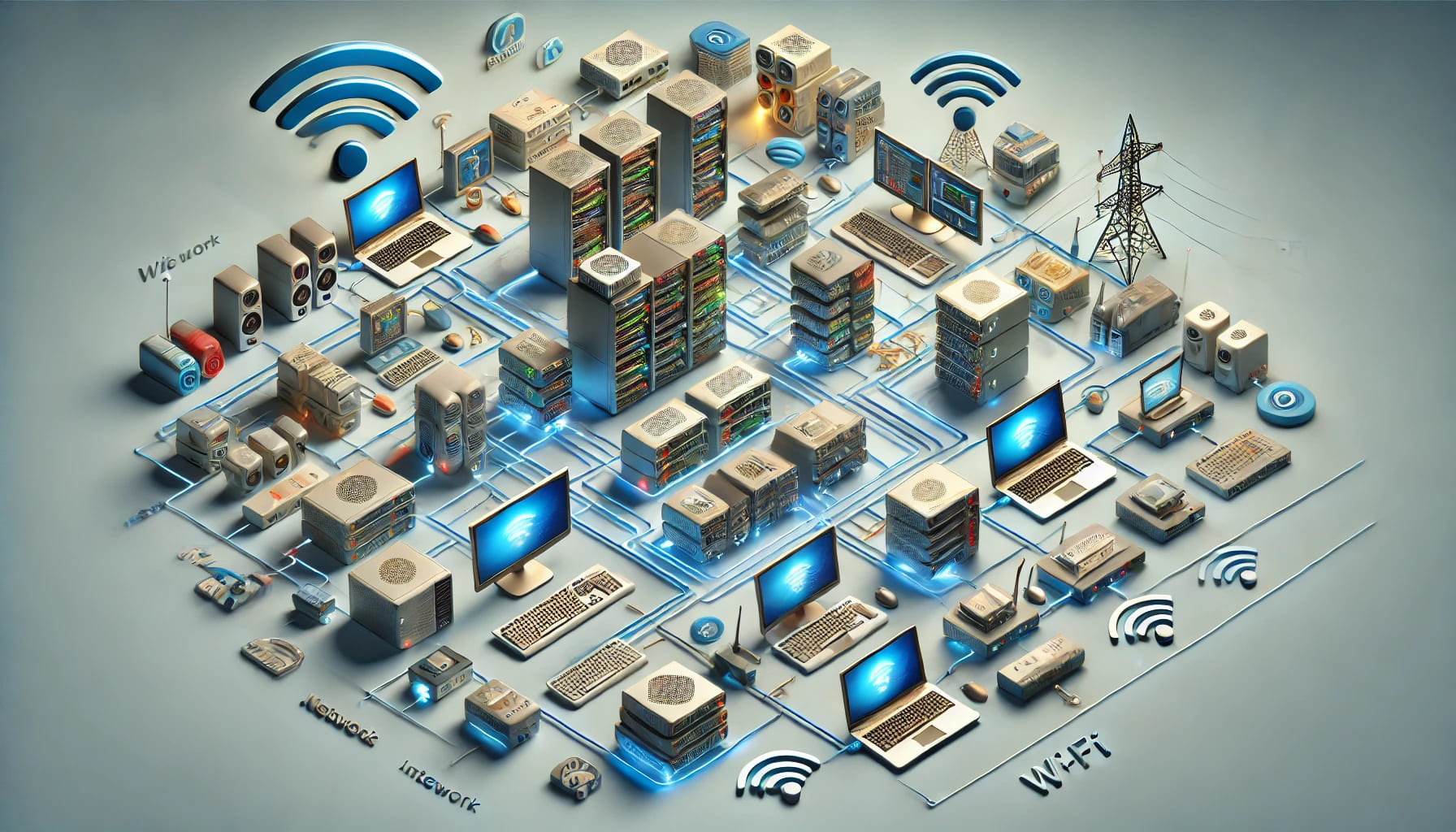Introduction to computer network
Imagine a world where your smartphone can instantly share photos with friends, your laptop can access files stored on a remote server, and your tablet can stream movies seamlessly. This is the magic of computer networks! They enable everything from sending emails and making video calls to managing data securely and efficiently. With advancements in networking technologies, we enjoy fast, reliable internet connections and the convenience of wireless communication. Whether it's online gaming, remote learning, or smart home devices, computer networks are the backbone of our digital lives, connecting us to endless possibilities and transforming how we interact with the world.

A computer network is a collection of interconnected devices (such as computers, servers, and networking hardware) that communicate with each other to share resources and information. These resources can include data files, applications, internet access, and hardware like printers and scanners. The network may vary in terms of size such as a small home network to a large network like the Internet. The Internet is the most suitable example of a computer network. Computer networks offer multiple benefits that enhance communication, efficiency, and resource management. Here are some key advantages:
Importance of Computer Networks
I. Resource Sharing
a)Hardware Sharing: Allows multiple computers to share printers, scanners, and storage devices.
b) Software Sharing: Enables users to access applications and software tools over the network.
c)Data Sharing: Facilitates the sharing of files and databases among users.
II. Communication
a)Email: Enables users to send and receive messages and files.
b) Instant Messaging: Allows real-time text communication through instant messaging services. For example, WhatsApp Facebook Messenger, Telegram, WeChat, Signal, Skype, Line, Snapchat.
c) Video Conferencing: Supports face-to-face meetings and collaboration over long distances. For example, Microsoft Teams, Google Meet, Cisco Webex, and Skype are the most common video conferencing platforms.
III. Data Security and Management
a)Centralized Data Management: This makes it easier to back up data and manage security policies.
b) Access Control: Allows administrators to control who can access specific data and resources.
c) Data Integrity: Ensures that data is consistent and accurate.
IV. Internet Access
a)Shared Internet Connections: Multiple devices can access the Internet through a single connection, reducing costs.
b)Access to Information: Provides access to vast amounts of information and online resource.
V. Scalability and Flexibility
a)Easy Expansion: Networks can be easily expanded to include new devices and users without significant changes.
b)Remote Access: Facilitates remote work by allowing users to access the network from different locations.
VI. Enhanced Security
a)Centralized Security: Allows for the implementation of uniform security measures, such as firewalls and antivirus protection.
b)User Authentication: Ensures that only authorized users have access to certain data and resources.
VII. Cost Efficiency
a)Reduced Costs: Sharing resources and software reduces the need for individual purchases, lowering overall costs.
b)Operational Efficiency: Streamlined communication and processes lead to increased productivity and reduced operational expenses.